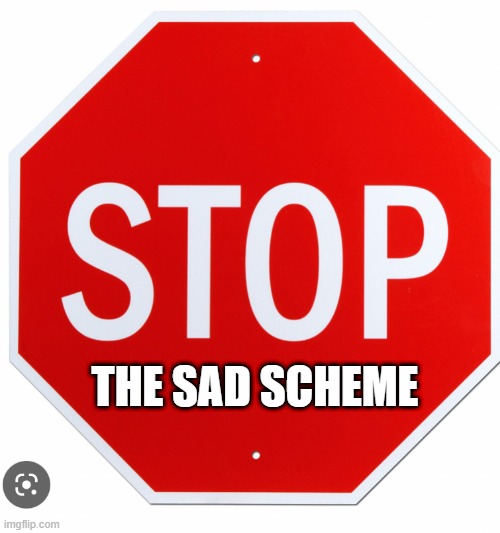SAD Scheme Leads to Another Massively Disproportionate Asset Freeze–Powell v. Schedule A
[Reminder: I don’t blog all of the SAD Scheme cases I see, and the ones I blog are more exemplars of the general principles than standout or unique cases.]
Kate Louise Powell is a Scotland-based artist. (I wonder how she became a participant in the SAD Scheme? I saw 10 different SAD Scheme cases in her name). As part of a SAD Scheme case, she claims an Amazon seller infringed on her work. Here is the comparison:
This looks like a derivative work to me. It’s clearly based on the original and clearly adds new expression. Would fair use apply?
This post focuses on the case economics. Take a look at the numbers:
- Amazon restrained $155k+ of the defendant’s money. That’s just for one of the many defendants in this case. I wonder if the court realized just how much money would be affected by its earlier orders?
- The plaintiff claims $30k in actual damages based on a hypothetical licensing fee. Even if this were correct (it seems massively inflated to me), the plaintiff has already admitted that she is restraining 5x the amount of damages at issue.
- “Defendant admits that it profited $32.30 from the sale of the accused product.” This means the plaintiff restrained over $155k more than the profits at issue….a ratio of 4,800x. Many defendants will settle in this circumstance, at an inflated price, just to unlock their cash flow, i.e., they can’t let a $32 problem dictate the disposition of $150k+ of cash.
The defendant fought back with its own damages expert. The court is confused enough by the mismatch between actual damages claim and the apparent profit to deny the plaintiff summary judgment. No word, however, about whether the court will reduce the amount restrained at Amazon or if the plaintiff will face consequences for massively overrestraining compared to their own actual damages claim. I’ll bet the plaintiff is going to get away with the overrestraint, as they usually do.
I note this is a copyright case instead of the more common SAD Scheme trademark claims. As usual, joinder in this case is almost certainly wrong (see the Viral DRM case for a discussion about parallel infringements). The complaint makes factually threadbare assertions that the defendants adopted similar tactics and design elements, which “suggests” (their word, not mine) that the defendants are somehow related to each other. Courts often tolerate detail-less allegations like this, but they shouldn’t.
Case Citation: Powell v. The Partnerships and Unincorporated Associations Identified on Schedule A, 2024 WL 3443040 (N.D. Ill.
Prior Blog Posts on the SAD Scheme
- Misjoinder Dooms SAD Scheme Patent Case–Wang v. Schedule A Defendants
- Judge Hammers SEC for Lying to Get an Ex Parte TRO–SEC v. Digital Licensing
- Judge Reconsiders SAD Scheme Ruling Against Online Marketplaces–Squishmallows v. Alibaba
- N.D. Cal. Judge Pushes Back on Copyright SAD Scheme Cases–Viral DRM v. YouTube Schedule A Defendants
- A Judge Enumerates a SAD Scheme Plaintiff’s Multiple Abuses, But Still Won’t Award Sanctions–Jiangsu Huari Webbing Leather v. Schedule A Defendants
- Why Online Marketplaces Don’t Do More to Combat the SAD Scheme–Squishmallows v. Alibaba
- SAD Scheme Cases Are Always Troubling–Betty’s Best v. Schedule A Defendants
- Judge Pushes Back on SAD Scheme Sealing Requests
- Roblox Sanctioned for SAD Scheme Abuse–Roblox v. Schedule A Defendants
- Now Available: the Published Version of My SAD Scheme Article
- In a SAD Scheme Case, Court Rejects Injunction Over “Emoji” Trademark
- Schedule A (SAD Scheme) Plaintiff Sanctioned for “Fraud on the Court”–Xped v. Respect the Look
- My Comments to the USPTO About the SAD Scheme and Anticounterfeiting/Antipiracy Efforts
- My New Article on Abusive “Schedule A” IP Lawsuits Will Likely Leave You Angry
- If the Word “Emoji” is a Protectable Trademark, What Happens Next?–Emoji GmbH v. Schedule A Defendants
- My Declaration Identifying Emoji Co. GmbH as a Possible Trademark Troll



